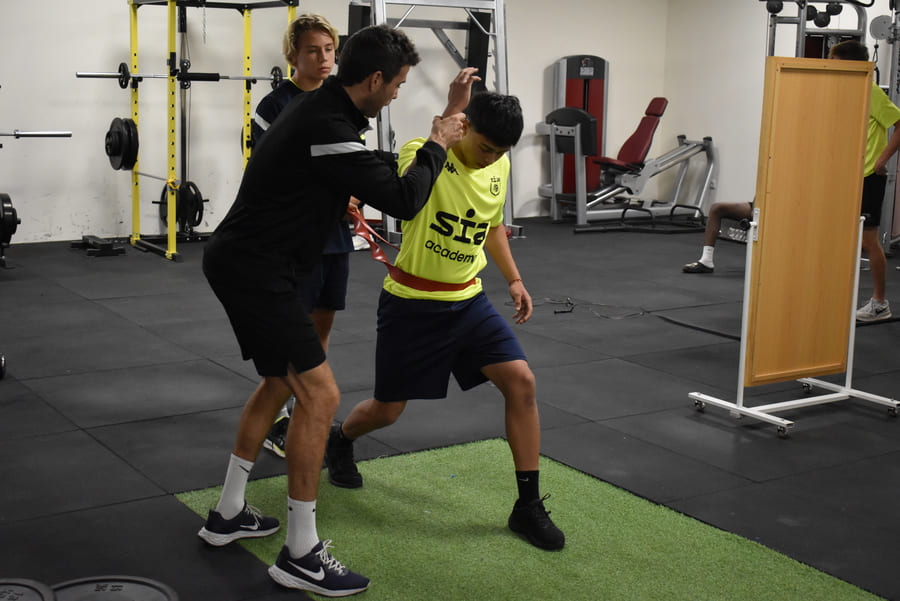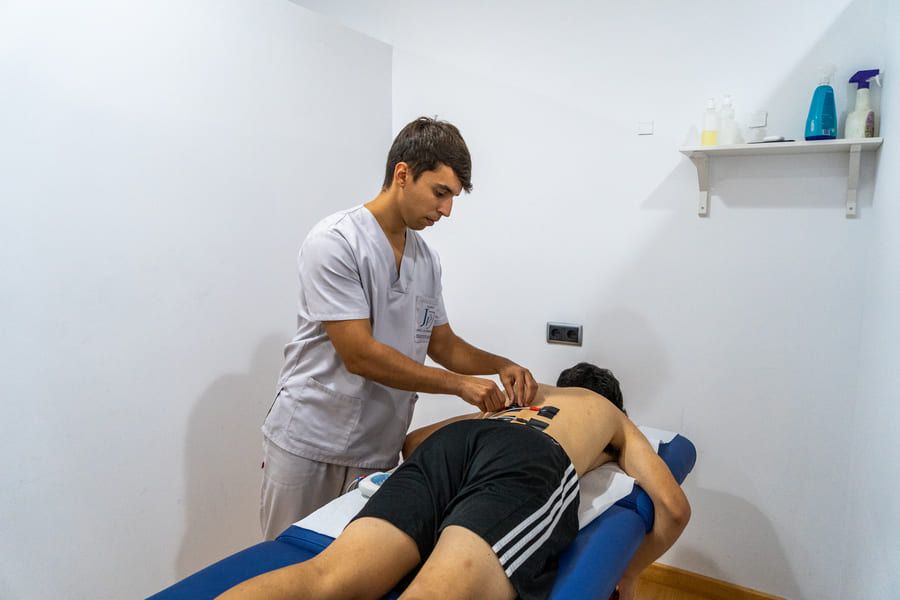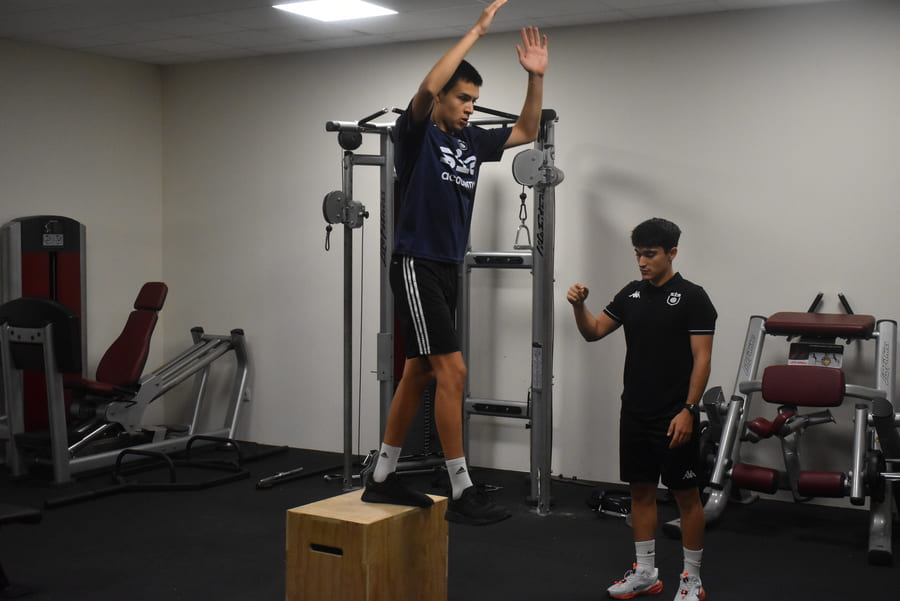
Introduction
The physiotherapist is a fundamental figure in the field of professional soccer, playing an essential role in both the prevention of injuries and the rehabilitation of players. The intervention of a physiotherapist is not only limited to treating injured players, but also seeks to optimize their physical performance and functionality. Thanks to the application of specialized knowledge, the physiotherapist helps players recover from injuries and maintain an optimal physical condition, in order to reduce the risk of relapses and improve their performance on the field.
Table of contents
Main Functions of the Physiotherapist in Soccer
The role of the physiotherapist in the recovery of soccer players is diverse and focuses on three key areas: assessment and diagnosis, post-injury rehabilitation and injury prevention.
Evaluation and Diagnosis
The initial evaluation is the starting point of the physical therapist‘s work and is crucial for successful intervention. The comprehensive evaluation allows the extent of an injury to be determined or to identify risk factors that could predispose the player to future injury. This process includes a detailed movement analysis and the performance of specific functional tests.
A study in the Journal of Orthopaedic & Sports Physical Therapy supports the importance of assessments in sports physical therapy, noting that an accurate assessment allows the physical therapist to design treatment plans tailored to each player’s individual needs (Garrison et al., 2018). These assessments include a range of mobility, strength, stability, and motor control tests, which provide data on joint and muscle functionality.

In addition, the physical therapist uses biomechanical analysis tools to evaluate movement under game conditions. This analysis allows the detection of incorrect movement patterns or asymmetries that may increase the risk of injury, allowing intervention before a major problem occurs. Early identification of these patterns helps to implement corrective exercises, preventing problems from escalating into more serious injuries.
Post Injury Rehabilitation
After a soccer player suffers an injury, rehabilitation is essential to restore the functionality of the affected area and facilitate a safe return to the field. At this stage, the physiotherapist implements a personalized treatment plan that includes manual therapy techniques, electrotherapy and specific rehabilitation exercises.
Manual therapy, which encompasses massage, soft tissue mobilization and myofascial release techniques, is one of the main tools used in this phase. Studies show that manual therapy helps relieve muscle tension and improve circulation, facilitating faster recovery and reducing pain (Cohen et al., 2015). In addition, manual therapy helps to improve joint range of motion and flexibility of injured muscles.

Electrotherapy is also used at this stage to accelerate the recovery of damaged tissues. Techniques such as electrostimulation and ultrasound can reduce inflammation and pain, facilitating the healing of muscles, tendons and ligaments (Lake et al., 2020). These treatment modalities help reduce recovery time, allowing the soccer player to begin the strengthening and motor re-education process sooner.
Specific exercises are a crucial part of post-injury rehabilitation. The physiotherapist designs a therapeutic exercise program to restore motor function and improve stability and balance. Scientific evidence supports the effectiveness of these exercises in restoring muscle strength and stability, which is essential to prevent relapses and ensure that the player returns to the pre-injury level of performance (Heiderscheit et al., 2010).
Injury Prevention
Prevention is another key area in which the physiotherapist works on an ongoing basis, even with players who are not actively injured. The design of specific preventive programs helps to significantly reduce the risk of injury in soccer, a sport in which fast movements and explosive actions increase the likelihood of sprains, tears and other muscle and joint injuries.

Preventive programs such as FIFA 11+, which focus on strengthening, stretching and proprioception exercises, have been shown to reduce injury rates by 30-50% in soccer players who practice them regularly (Soligard et al., 2008). The physical therapist uses ongoing assessment tools to tailor these prevention programs to the specific needs of each player. These programs may include:
Stability and strengthening exercises:
Strengthening key muscles such as the glutes, hamstrings and core muscles helps to improve joint stability and distribute the load more evenly throughout the body.

Dynamic stretching:
This type of stretching improves flexibility without affecting muscle power, better preparing you for performance on the field.

Proprioception and balance:
Proprioception exercises, such as the use of unstable surfaces, improve stability and neuromuscular control, fundamental factors in the prevention of sprains and ligament injuries.

Tools Used by the Physiotherapist
To carry out his work, the physiotherapist uses a combination of techniques and therapeutic tools. These tools are essential to optimize the recovery and performance of soccer players.
Manual Therapy
Manual therapy is one of the most widely used methods in sports physiotherapy and is supported by scientific evidence for its effectiveness in muscle recovery. Techniques such as massage, joint mobilizations and myofascial release help reduce muscle tension, improve blood circulation and increase tissue flexibility. A study in Sports Medicine points out that these techniques not only help relieve pain, but also improve range of motion and joint mobility, important factors for performance and injury prevention (Wilke et al., 2020).

Electrotherapy
Electrotherapy, which includes techniques such as electrostimulation and ultrasound, is used to accelerate tissue recovery and reduce inflammation. Evidence supports the use of these techniques to improve tissue healing and reduce pain in early stages of recovery (Lake et al., 2020). For example, electrostimulation helps maintain strength in muscles that cannot be fully activated due to injury, while ultrasound can penetrate deep tissues and facilitate regeneration.

Therapeutic Exercises
Therapeutic exercises are an essential part of physiotherapy and are tailored to the needs of each soccer player. These exercises include strengthening, stability, proprioception and motor re-education work, all designed to improve motor function and reduce the risk of relapse. Evidence in sports rehabilitation suggests that specific therapeutic exercises improve muscle strength and neuromuscular coordination, allowing a full and functional recovery (Emery et al., 2005).

Psychological Aspects of Recovery
Recovery from injury also involves an important emotional component, as soccer players often experience anxiety and frustration when off the field. The physical therapist not only focuses on physical recovery, but also supports the player in managing these emotions. Research in Psychology of Sport and Exercise suggests that psychological support during rehabilitation helps players adhere to the recovery program and maintain a positive attitude (Cupal & Brewer, 2001).
The physiotherapist plays a vital role in the recovery and performance of soccer players, assisting in both the prevention and treatment of injuries. Thanks to a thorough assessment, a personalized rehabilitation plan and prevention techniques, the physiotherapist allows players to return to the field in optimal condition and with a reduced risk of relapse. The work of the physiotherapist goes beyond simple physical recovery; he becomes an integral support for the player, providing the tools to help him return to the field in optimal condition and with less risk of relapse. The physiotherapist provides the necessary tools so that the soccer player can perform to the best of his ability and enjoy a long and healthy career in the sport.
Author: Josep Ferri
SIA Academy´s Physical Therapist







Hello this is an email please give me a chance to make my dream come true